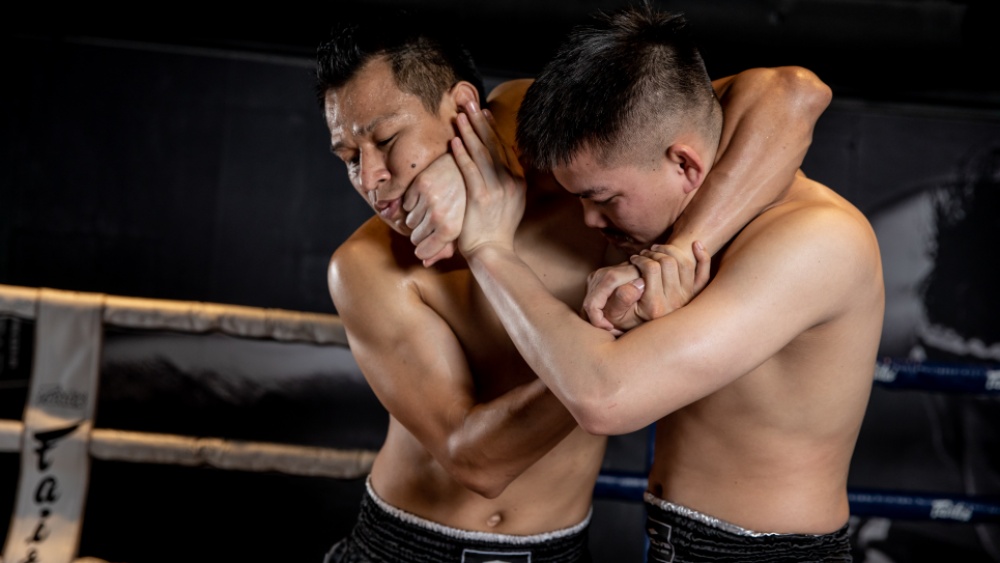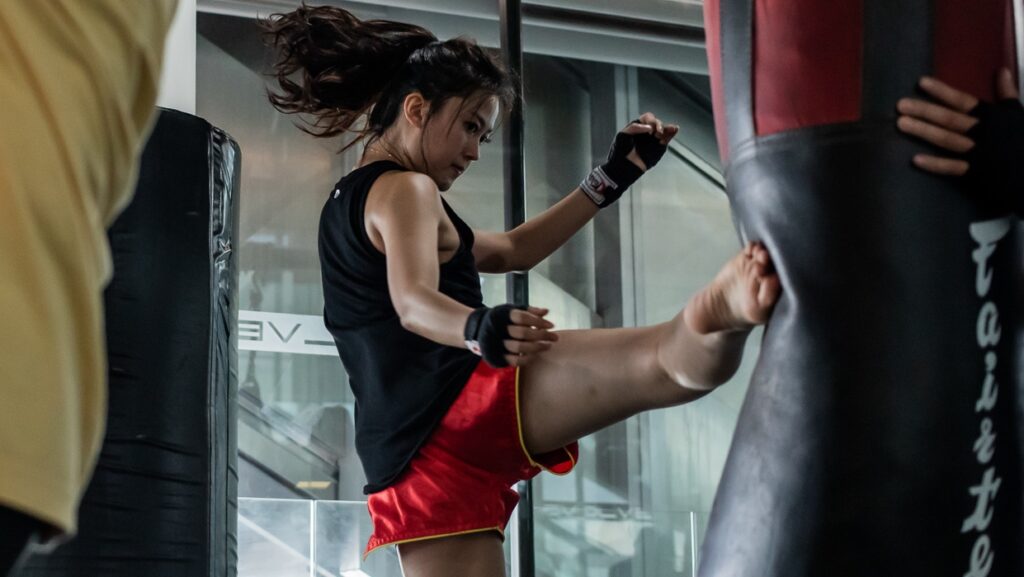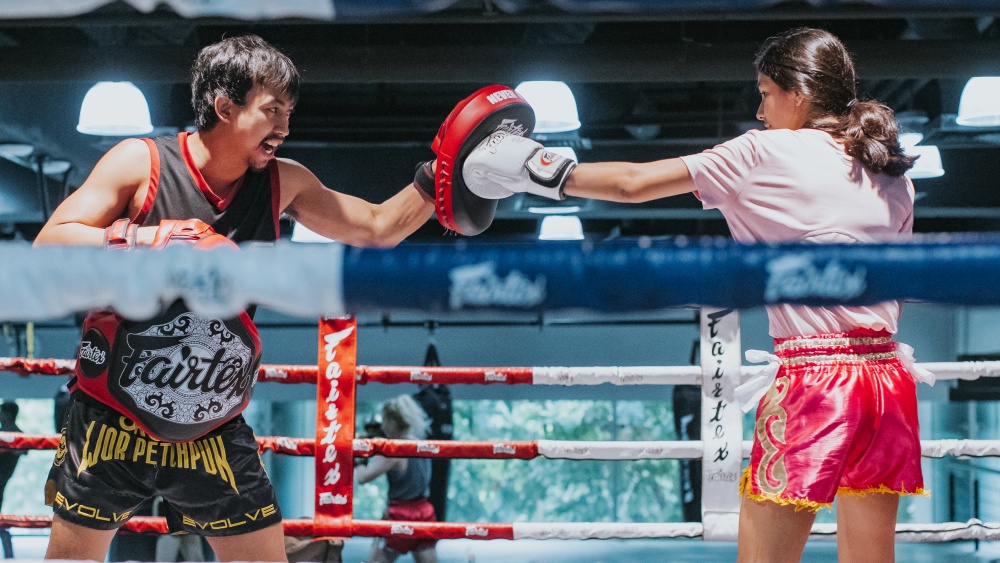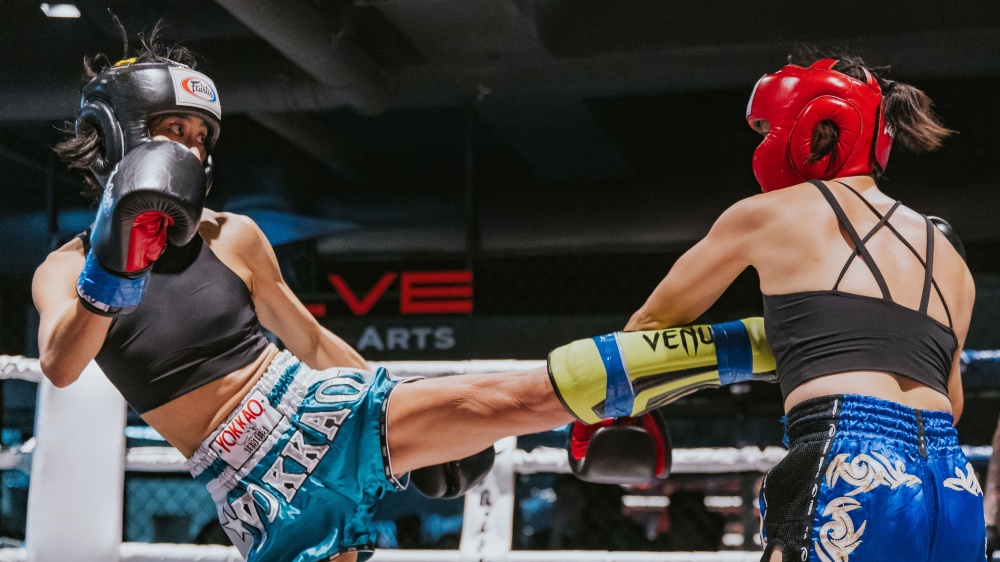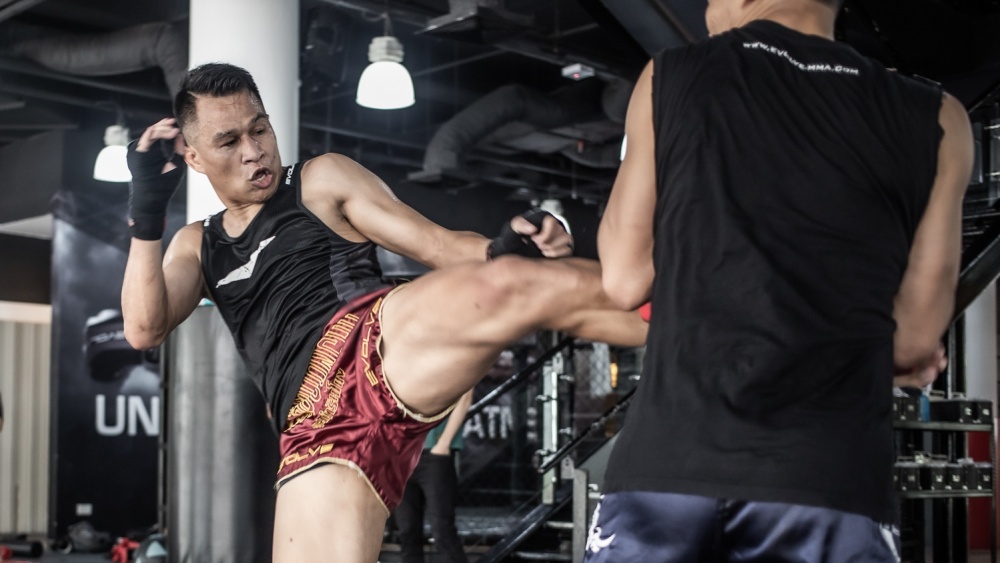A strong neck can be a massive advantage in combat sports like Muay Thai. A strong neck reduces how much your brain swishes inside your skull whenever you get hit with a big punch or kick and improves your ability to fight in the clinch.
Most striking-based martial arts like boxing tend to frown upon clinch fighting, but that’s not the case with Muay Thai. The art of eight limbs allows fighters to punch, kick, elbow, knee, throw, and sweep from clinch positions, making Muay Thai fighters extremely adept at fighting in the clinch.
Clinch fighting isn’t the most exciting part of training Muay Thai, but it’s something you don’t want to ignore. Strikers aren’t the biggest fans of grappling, so they often dislike working on their clinch games as much as they would dislike learning how to wrestle.
You need to train your clinch game regularly, so the techniques you use in that position become part of your muscle memory.
Muay Thai fighters are taught to rely on technique instead of brute force while in the clinch, but having a strong neck often comes in handy when facing equally skilled or better opponents. You’ll need more than a strong neck to make you effective inside the clinch; muscle endurance in your neck is just as important. The quicker your neck muscles fatigue, the stronger your opponent will feel inside the clinch. Other significant muscle groups that can make you more formidable in the clinch include your back, shoulders, and arms.
The key to controlling someone in the clinch is controlling their neck. Once you establish both hands on an opponent’s head, you can knee them with ease or throw them off balance. Maintaining good posture and keeping your neck and torso upright makes it difficult for opponents to establish control of your neck. A strong neck makes it harder for your opponent to press down your head so they can knee your face.
Strengthen Your Neck For Muay Thai With These Ten Exercises
As crucial as neck strength is for Muay Thai, many fighters don’t spend enough time working on it. You can give yourself an advantage inside the ring by making neck exercises a regular part of your strength and conditioning routine.
Let’s take a look at some of the most effective neck exercises for Muay Thai fighters:
1) Medicine Ball Wall Rolls
Here’s a simple exercise that works all the muscles in your neck from different angles. You’ll need a medicine ball to perform the exercises. Start with a lighter ball and move on to a heavier one as you become familiar with the exercise.
Here’s what it looks like:
- Grab a medicine ball and place it on a wall at about forehead height.
- Use your forehead to pin the ball against the wall, so it doesn’t fall to the ground.
- Start moving your head up and down, rolling the medicine ball, and keeping it pinned against the wall.
- Keep going for about 60 seconds, and try your side and the back of your head while keeping the ball pinned. You’ll feel a nice burn in your neck by the time you’ve completed about a couple of these.
2) Neck Harness Raises
We highly recommend getting a neck harness if you’re serious about strengthening your neck. Many of the most effective neck exercises involve wearing one, and this is one of them.
To perform raises with a neck harness:
- Secure a neck harness on your neck and grab a dumbbell, weight plate, or kettlebell you can attach to it.
- Hold the weight in your hands once you’ve secured it to the harness to avoid straining your neck as you get into the starting position.
- Stand upright with your feet about shoulder-width apart and bend your torso forward 45 degrees as if you were getting ready to perform barbell rows.
- Gently release the weight so your neck now supports all of its weight. Place your hands on your knees.
- Move your head up and down as if you were nodding, and go for as many reps as you can execute. Increase the weight if you can pump out more than 20 reps. Aim for three sets.
3) Neck Bridges
Neck bridges are an old-school exercise that wrestlers have used to strengthen their necks for decades. They involve shifting most of your weight onto your neck, working your stabilizer muscles. The exercise puts lots of strain on your neck when done incorrectly, so make sure you use proper form. Besides muscles in your neck, these bridges also work your core and hip flexors. Strong hip flexors and core help with kicking techniques.
Here’s how to perform a neck bridge:
- Lay on an exercise mat with your back on the ground and your knees up.
- Raise your hips, so you’re now balancing your weight on your toes and the top of your head.
- Holding the position for about 60 seconds without letting your shoulder or back make contact with the floor.
4) Dumbbell Shrugs
Dumbbell shrugs are one of the most popular exercises for building traps and shoulder muscles. These muscles are connected to your neck muscles, so they also grow and become stronger as your traps grow.
Here’s how to perform this exercise:
- Stand upright while holding a dumbbell in each hand.
- Shrug both shoulders up and hold the position for three seconds before lowering your shoulders to complete a rep.
- Aim for about three sets of ten reps. Move on to heavier weights if you can get more than ten reps.
Lifting heavy is the key to getting the most out of shrugs. You can also perform this exercise using kettlebells or a barbell.
5) Reverse Neck Harness Raises
Performing the reverse raise targets your neck muscles from different angles than conventional raises. To perform the exercise:
- Attach a neck harness to your head and connect a dumbbell, weight plate, or kettlebell to it.
- Lay on your back on an exercise bench, so your head is hanging off it.
- Let your head go as far back as possible and raise it, so it’s level with the bench. Slowly return to the starting position to complete a rep. Aim for three sets of 20 reps.
6) Resistance Band Neck Pulls
Here’s an isometric exercise that helps to build muscle strength and endurance in your neck. You’ll need a resistance band and something sturdy to loop it around like a tree or post.
Here’s what this exercise looks like:
- Loop a resistance band around a solid object, so it’s fully anchored.
- Wrap the band around your neck and walk back away from the tree until you feel the resistance band pulling your head forward.
- Hold the position for 60 seconds, then perform the same exercise facing away from the object the band is anchored on.
7) Quadruped Chin Tuck
The chin tuck is an excellent way to train the deep flexors in your neck. The exercise can be performed from various positions, like standing on your back or all fours (quadruped). It strengthens muscles in your neck while improving your forward head posture.
Start performing the exercise without weights and add resistance once your form is solid.
Here’s what the exercise looks like:
- Get on all fours with your knees and hands on the ground. Keep your head and back straight, so you can draw a straight line that runs through them.
- Bring your chin towards your body and touch your upper chest with it.
- Hold the position for a few seconds, release, and bring your head back to the starting position.
Once you have the correct form for the exercise, you can make it more challenging by adding some resistance. Just place a towel and a weight plate on the back of your head once you’re in the starting position.
8) Quad Stability Ball Stab
You’ll need a training partner and an exercise ball for this exercise. It is a great way to target neck muscles, forcing them to carry a considerable portion of your weight during the exercise.
Here’s how you perform the exercise:
- Get on your knees with a medicine ball placed in front of you.
- Lean forward and place your head and arms on the ball so some of your weight is now supported by your neck.
- Try to stay as stable as possible in the position. Have a training partner push the ball from different angles to force you to use your neck muscles to stay balanced.
9) Neck Lateral Flexion
This exercise works the side muscles in your neck, the sternocleidomastoid. It helps to increase flexion and extension in your neck. Here’s what the exercise looks like:
- Secure a harness around your head and attach a weight plate, dumbbell, or kettlebell to it.
- Hold the weight with your hand as you lay on your side on an exercise bench with your head hanging off.
- Slowly release the weight, so it’s hanging off your head.
- Lift your head by moving your head laterally, bringing the weight up. Hold the position for a second and slowly return the weight to its starting position.
- Aim for three sets of 15 to 20 reps.
10) Neck Plate Curls
Neck plate curls are an effective way to strengthen muscles at the back of your neck. It also helps to relax your spine and reduce stiffness in the neck. To perform the exercise:
- Lay belly down on an exercise bench with your head hanging off it. Your face should be facing the floor.
- Grab a weight plate staged in front of the bench and put it on the back of your head, holding it stable with both hands.
- Slowly lift your head and hold the position for a second before returning to the starting position
- Aim for about three sets of 20 reps each.
You may also like:
